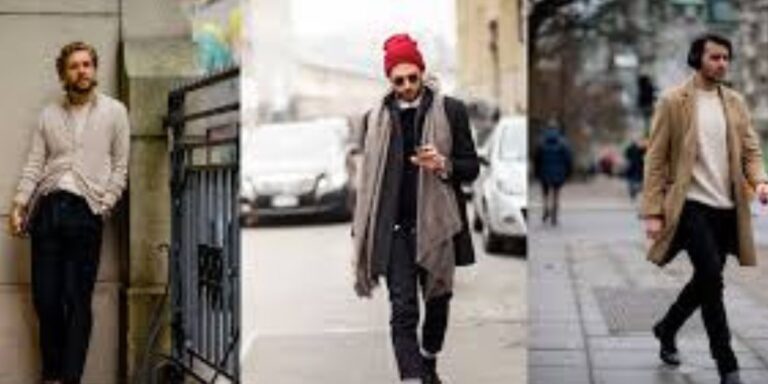The Nordic fashion industry, encompassing countries like Sweden, Denmark, Norway, Finland, and Iceland, is celebrated for its minimalist aesthetics, high-quality craftsmanship, and a strong emphasis on sustainability. With a focus on clean lines, neutral colors, and functionality, Nordic fashion has made a significant impact on the global stage. This article explores the distinctive characteristics of the Nordic fashion industry, its dedication to sustainability, innovation, and how it influences the global market.
Key Features of Nordic Fashion
1. Minimalist Aesthetics
Nordic fashion is synonymous with simplicity. The designs prioritize clean silhouettes, practical functionality, and timeless elegance. Inspired by the natural landscapes of the region, Nordic designers often incorporate neutral palettes like whites, greys, and earthy tones, creating versatile pieces that never go out of style.
2. High-Quality Craftsmanship
Craftsmanship is at the heart of Nordic fashion. The industry prides itself on producing durable, high-quality garments that stand the test of time. Brands like Acne Studios, Filippa K, and Ganni have set benchmarks for combining impeccable craftsmanship with contemporary designs, earning international acclaim.
3. Fusion of Tradition and Modernity
The Nordic fashion industry seamlessly blends traditional techniques with modern innovation. Many designers draw inspiration from their cultural heritage, such as traditional Nordic patterns or natural materials, while embracing cutting-edge technologies to create modern and sustainable apparel.
A Commitment to Sustainability
1. Pioneering Circular Fashion
Nordic fashion leads the way in the global push for circular fashion. The concept emphasizes designing products with longevity in mind, using recyclable materials, and encouraging consumers to repair, reuse, and recycle garments. Swedish giant H&M, for instance, has implemented recycling programs in its stores, encouraging customers to bring back old clothes.
2. Eco-Friendly Materials
Brands in the Nordic region are known for their use of sustainable and organic materials. Companies like Marimekko and Fjällräven incorporate organic cotton, recycled polyester, and ethically sourced wool, ensuring minimal environmental impact while maintaining product quality.
3. Transparency in Supply Chains
The Nordic fashion industry emphasizes transparency, ensuring that consumers know where and how their garments are made. Brands often disclose detailed information about their supply chains, including factory locations, worker conditions, and environmental impact metrics, building trust and accountability.
4. Collaboration for Sustainability
The Nordic Fashion Association’s “Nordic Initiative Clean and Ethical” (NICE) project promotes collaboration among designers, manufacturers, and policymakers to establish sustainable practices across the region. Such initiatives position the Nordic countries as leaders in responsible fashion production.
Innovation in Fashion Technology
1. Smart Textiles
Nordic designers are at the forefront of smart textile development, integrating technology into garments to enhance functionality. Examples include temperature-regulating fabrics, moisture-wicking materials, and even garments embedded with sensors for health monitoring.
2. Digital Fashion Platforms
Nordic companies have embraced digital platforms to reach global audiences. Virtual fashion shows, augmented reality shopping experiences, and online customizations have become essential tools for engaging tech-savvy consumers.
3. Renewable Energy in Production
Many Nordic fashion brands use renewable energy sources in their production processes. Factories powered by wind or hydroelectric energy reduce carbon footprints and align with the region’s commitment to combating climate change.
Global Influence of Nordic Fashion
1. A Hub for Emerging Designers
Nordic fashion weeks, particularly Copenhagen Fashion Week, have become global platforms for emerging designers. These events showcase innovation, sustainability, and fresh perspectives, attracting buyers and influencers worldwide.
2. Lifestyle Branding
Nordic fashion transcends apparel, embodying a lifestyle centered on balance, functionality, and connection with nature. This holistic approach appeals to global consumers seeking authenticity and purpose-driven brands.
3. Popularity Among Millennials and Gen Z
The younger generations appreciate the ethical and sustainable values of Nordic fashion. Brands like Ganni and ARKET resonate with Millennials and Gen Z, who prioritize conscious consumption and are willing to invest in eco-friendly options.
Challenges in the Nordic Fashion Industry
1. Balancing Costs and Sustainability
Producing sustainable fashion often comes at a higher cost, posing challenges for smaller brands to compete with fast fashion giants. Finding ways to scale sustainability while remaining affordable is a key hurdle.
2. Climate Challenges
The harsh Nordic climate can impact the production and transportation of materials, increasing reliance on imports. This dependency sometimes offsets the carbon savings achieved through sustainable practices.
3. Navigating Global Trends
While Nordic fashion is celebrated for its timeless style, staying relevant in rapidly changing global trends is an ongoing challenge. Designers must innovate while maintaining their minimalist roots.
The Future of Nordic Fashion
The future of Nordic fashion lies in its unwavering commitment to sustainability, innovation, and collaboration. As the global demand for ethical and eco-friendly fashion continues to grow, Nordic brands are well-positioned to lead the charge. By leveraging their strengths in design, technology, and environmental consciousness, the Nordic fashion industry will remain a trailblazer on the global stage.
Conclusion
The Nordic fashion industry exemplifies a harmonious blend of style, sustainability, and innovation. Its minimalist aesthetics, dedication to quality, and ethical practices resonate with consumers worldwide. While challenges remain, the industry’s forward-thinking approach ensures it will continue influencing and inspiring for years to come. Nordic fashion isn’t just about clothing; it’s a movement that champions a better, more sustainable future for all.

